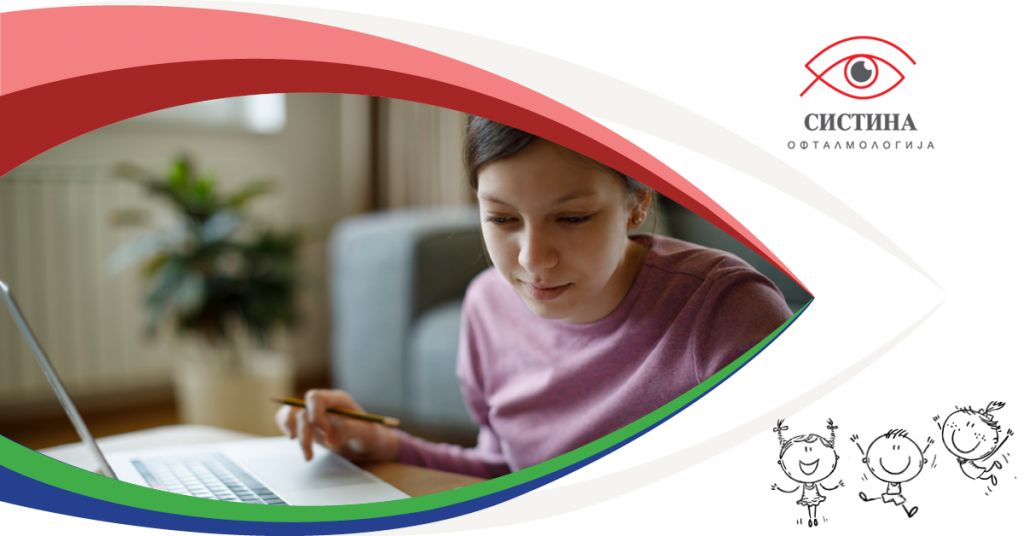
The COVID virus situation has led to major digital challenges, with sitting at home introducing a new way of organizing the day including increased activities in front of electronic devices, online learning as well as communication among the young population.
In general, children and students are not immune to the appearance of tired, dry eyes while focusing on computer devices for a long time. This inconvenience has led parents to consult ophthalmologists more often, asking how to relieve their loved ones.
To help you, we have prepared a guide on how to prevent this digital strain on your eyes.
Causes that lead to eye fatigue, headaches, blurred vision, dryness and eye irritation are:
- Reduced flashing while using digital devices;
- Focusing on the same distance for a long time;
- Continuous or prolonged reading, writing or other nearby work.
- Recommendation from ophthalmologists to reduce such problems, every 20 minutes, to take a 20-second break from using an electronic device. Although it sounds simple, are there still a few guidelines to follow this vital 20-20 rule easier?
- Set a timer to remind your child to pause every 20 minutes;
- Sometimes replace an e-book with a real one;
- Encourage children to look up or out of the window every two chapters or simply close their eyes for 20 seconds;
- Mark the books in several chapters so that when they have finished, they can look them up. You can do the same with e-books with the “bookmark” option.

In addition to relaxing, it is good to have a “home classroom” in online teaching, because angles, placement and sitting position also play a big role in reducing eye strain.
Here are some tips on how to improve your learning, work or play environment:
Students should look at digital devices at a distance as long as the length of the arm, i.e. at a distance of about 45-60 cm from the seat. It would be ideal if the placement of the monitor is level with the eyes. The tablets should also be kept as far away as the length of the arm;
To reduce glare, place the light behind your back, not behind a computer screen;
Adjust the brightness and contrast of the screen to make them comfortable;
Do not use the device outdoors or in bright areas, screen glare may cause eye strain;
Avoid using the device in a dark room. As the pupil widens to accommodate the darkness, the light on the screen may distort the image and cause discomfort;
Do not use the device 30 – 60 minutes before bedtime. Blue light can disturb their sleep. Another solution to reduce blue light exposure is to switch to “dark mode” or something similar.
Studies show that the increased use of these digital devices or the increased work at close range without rest leads to the so-called epidemic of myopia in pupils and students.
However, ophthalmologists recommend that parents spend as much time as possible with their children outdoors given the current situation. Of course, it is also useful to engage in certain sports activities, for better body functionality, a feeling of fullness and distraction from electronic devices. Especially for you, “Sistina Ophthalmology” is at your disposal with the team of ophthalmologists through the option “Online consultation with an eye doctor”. If you have any questions regarding the therapy, guidelines or dilemmas about your children’s eye health and the effect caused by electronic devices, you can consult via video chat with a specialist ophthalmologist.
